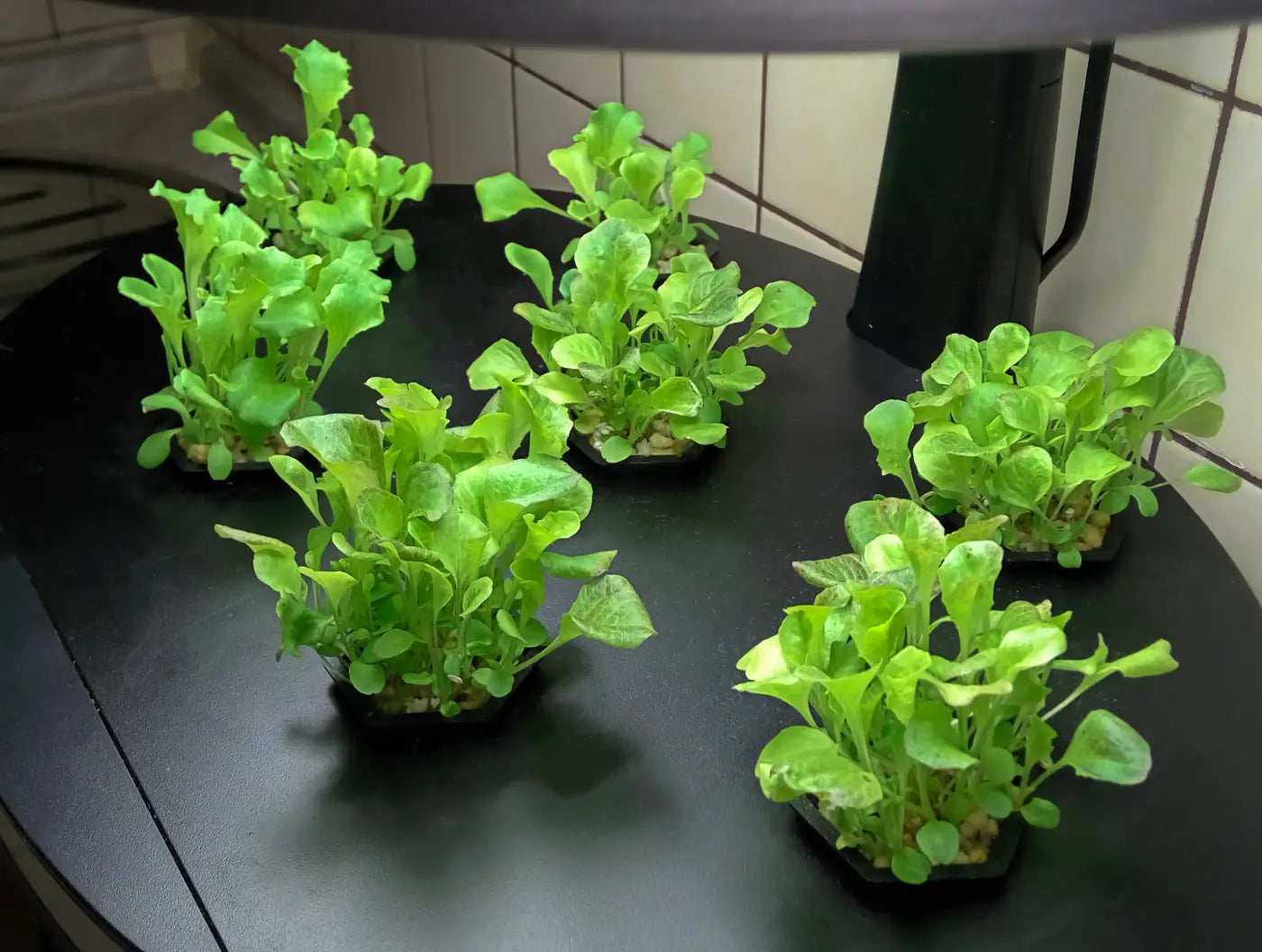What Do Plants Need to Grow?
The ABCs of Plant Growth: What Do Plants Need to Grow?
Gardening and cultivating plants is a gratifying endeavor, but success often hinges on understanding the fundamental requirements plants need to thrive. Whether you're a seasoned gardener or just starting, mastering the essentials for plant growth lays the groundwork for a flourishing garden.
Let's delve into a comprehensive guide that covers the crucial elements:
The Role of Sunlight in Plant Energy Production
Sunlight plays a pivotal role in plant energy production through the process of photosynthesis. It's the primary source of energy that drives the conversion of light energy into chemical energy within plants. This energy transformation occurs in the chloroplasts, the specialized structures within plant cells responsible for photosynthesis.
Well, how does sunlight contribute to plant energy production?
Light Absorption: Chlorophyll, the pigment found in chloroplasts, absorbs sunlight. This absorption of light energy is the initial step in photosynthesis. Other pigments, such as carotenoids, also play a role in capturing different wavelengths of light.
Activation of Photosystems: Within the thylakoid membranes of chloroplasts, there are complexes called photosystems. These photosystems contain chlorophyll and other pigments that absorb photons (light particles) and initiate a series of reactions.
Electron Excitation: When chlorophyll absorbs light energy, its electrons become energized and move to higher energy levels. This excitation of electrons triggers a flow of electrons through a chain of proteins in the thylakoid membrane.
ATP and NADPH Production: As the excited electrons move through the electron transport chain, they release energy, which is used to produce ATP (adenosine triphosphate) and NADPH (nicotinamide adenine dinucleotide phosphate), both crucial energy-carrying molecules.
Splitting of Water: In the light-dependent reactions of photosynthesis, water molecules are split into oxygen, protons (H⁺ ions), and electrons. The released oxygen is a byproduct and is released into the atmosphere, while the electrons and protons are used in further reactions.
Calvin Cycle: The ATP and NADPH produced in the light-dependent reactions are utilized in the Calvin Cycle, also known as the light-independent reactions. Here, carbon dioxide from the atmosphere is converted into glucose and other organic compounds. These reactions occur in the stroma of the chloroplasts and do not directly require sunlight, but they depend on the energy carriers (ATP and NADPH) generated in the light-dependent reactions.
Ultimately, sunlight serves as the driving force behind the entire process of photosynthesis, providing the energy necessary for the conversion of carbon dioxide and water into organic molecules like glucose, which becomes the primary energy source for the plant and, subsequently, for other organisms along the food chain.
The Role of Water in Plant Structure and Function
Water plays a crucial role in the structure and function of plants, serving various essential purposes:
Cell Structure and Turgor Pressure: Water maintains the structural integrity of plant cells. When water enters plant cells, it creates turgor pressure, which is necessary for maintaining cell shape and rigidity. This pressure keeps plant tissues firm and supports the plant's overall structure, helping it to stand upright.
Transport of Nutrients: Water acts as a carrier for essential nutrients and minerals dissolved in soil. Through a process called transpiration, water is absorbed by the roots and transported through the xylem (vascular tissue) to other parts of the plant. This process facilitates the movement of nutrients, enabling plants to grow and develop.
Photosynthesis: Water is a crucial component in the photosynthesis process. It's one of the raw materials required for photosynthesis to occur. In the presence of sunlight, water molecules are split during the light-dependent reactions, releasing oxygen and providing electrons and protons that are used to produce ATP and NADPH.
Temperature Regulation: Water helps regulate the temperature of plants. Through transpiration, plants release water vapor from their leaves, which cools the plant and its immediate surroundings. This process is similar to how sweating cools the human body.
Support and Growth: Water uptake and turgor pressure provide support for stems and leaves. It also facilitates cell elongation, which is essential for growth in plants. Without adequate water, plants may wilt, leading to stunted growth and potential damage.
Metabolic Reactions: Water is involved in various metabolic reactions within plant cells. It acts as a medium for biochemical reactions, facilitating enzyme activity and the movement of substances within the plant.
Water is crucial for plant survival, and its availability directly impacts plant growth, development, and overall health. Plants require a consistent supply of water for optimal functioning, and variations in water availability can lead to stress, affecting their growth and productivity. Factors like soil moisture levels, environmental conditions, and the ability of roots to access water all influence how effectively plants utilize water for their physiological processes.
Essential Macronutrients for Plant Nutrition
Plants require several essential macronutrients for their growth and development. These nutrients are vital for various physiological functions and are typically absorbed from the soil. The primary macronutrients required by plants include:
Nitrogen (N): Nitrogen is a critical component of proteins, nucleic acids, chlorophyll, and other essential molecules within plants. It's integral for growth, leaf development, and overall plant vigor.
Phosphorus (P): Phosphorus is crucial for energy transfer (in the form of ATP), DNA and RNA synthesis, and root development. It's also involved in flowering and seed formation.
Potassium (K): Potassium plays a role in numerous physiological processes within plants, including photosynthesis, enzyme activation, water regulation, and disease resistance. It contributes to overall plant health and vigor.
Calcium (Ca): Calcium is essential for cell wall formation, stability, and strength. It also aids in cell division, proper root growth, and nutrient uptake.
Magnesium (Mg): Magnesium is a central component of chlorophyll, the pigment responsible for capturing light energy during photosynthesis. It's vital for photosynthesis, enzyme activation, and the synthesis of nucleic acids and proteins.
Sulfur (S): Sulfur is a constituent of certain amino acids, vitamins, and coenzymes. It's essential for the formation of proteins, chlorophyll, and various metabolic processes in plants.
Carbon (C), Hydrogen (H), and Oxygen (O): While not traditionally considered nutrients in the same way as the others, carbon, hydrogen, and oxygen are fundamental elements for plant growth. They form the basic building blocks of organic molecules through photosynthesis and respiration.
These nutrients are required in relatively large quantities by plants and are often supplemented through fertilizers or by ensuring the presence of these elements in the soil. The absence or imbalance of these essential nutrients can lead to various deficiencies, affecting plant growth, development, and overall productivity.
Soil Structure and Its Impact on Plant Growth
The soil structure significantly influences plant growth and development. Soil structure refers to the arrangement of soil particles into aggregates or clumps and the pore spaces between them. It's determined by the combination of sand, silt, clay, organic matter, and other components.
Water and Air Availability: Soil structure affects the retention and movement of water and air within the soil. Well-structured soils with good aggregation allow water to infiltrate, be stored, and be accessible to plant roots. Adequate pore spaces facilitate oxygen diffusion to roots, which is crucial for respiration and nutrient uptake.
Root Penetration and Development: Soil structure influences root penetration and growth. Loose, well-aerated soils with good structure facilitate root penetration, allowing roots to explore a larger volume of soil for nutrients and water. Compacted or poorly structured soils hinder root growth, limiting the plant's access to essential resources.
Nutrient Availability: Soil structure impacts the availability of nutrients to plants. Good soil structure allows for the movement and retention of nutrients in the root zone. It also encourages microbial activity, which aids in nutrient cycling and availability for plants.
Soil Temperature: Soil structure can affect soil temperature. Dark soils with good structure absorb and retain heat better than lighter, sandy soils. This can impact plant growth rates and the activity of soil organisms.
Soil Erosion and Waterlogging: Poor soil structure can lead to issues such as soil erosion and waterlogging. Eroded soils lose topsoil, which contains nutrients crucial for plant growth. Waterlogging in compacted soils restricts oxygen availability to roots, causing stress and potentially harming plant health.
Improving soil structure often involves practices like:
Adding Organic Matter: Organic matter improves soil structure by enhancing aggregation, increasing water retention, and providing a source of nutrients. Compost, manure, and cover crops are commonly used to increase organic matter content.
Reducing Compaction: Techniques like reduced tillage, using cover crops, and avoiding heavy machinery on wet soils help prevent soil compaction, allowing for better root growth and water infiltration.
Balancing Soil Components: Managing the ratios of sand, silt, and clay in soils can help create an optimal structure for plant growth. Amendments like gypsum or lime can sometimes be used to improve soil structure in specific cases.
Overall, a healthy soil structure promotes optimal conditions for root growth, nutrient availability, and water retention, all of which are crucial for supporting healthy and vigorous plant growth.
Optimal Temperature Ranges for Plant Growth
Different plants have varying temperature requirements for optimal growth, and these requirements can be broadly categorized into cool-season and warm-season plants. Temperature affects various physiological processes within plants, including photosynthesis, respiration, and nutrient uptake. Let's look at general temperature ranges for plant growth:
Cool-Season Plants: These plants thrive in cooler temperatures and often include vegetables like lettuce, spinach, peas, and broccoli. Their optimal temperature ranges for growth typically fall between 50°F to 70°F (10°C to 21°C). They can tolerate lower temperatures and may even survive light frost.
Warm-Season Plants: These plants prefer warmer temperatures and include crops like tomatoes, peppers, corn, and cucumbers. Their optimal temperature ranges for growth are usually between 70°F to 90°F (21°C to 32°C) or even higher in some cases. They are sensitive to frost and may not grow well in cooler conditions.
Specific plants within these categories may have their own temperature preferences, so it's essential to consider the specific needs of each plant species. Additionally, temperature tolerance and adaptation can vary within a plant species due to genetic diversity or cultivar differences.
Extreme temperatures, either too high or too low, can stress plants and inhibit growth. Temperatures significantly outside the optimal range can lead to:
Heat Stress: High temperatures can cause wilting, reduced photosynthesis, leaf scorching, and flower drop in plants sensitive to heat.
Cold Stress: Low temperatures can cause frost damage, inhibit nutrient uptake, slow growth, and in severe cases, lead to tissue damage or plant death.
In gardening and agriculture, providing the right environmental conditions, including temperature control through shading, mulching, or using protective covers, can help extend the growing season and optimize plant growth. Additionally, selecting plant varieties or cultivars that are better adapted to local temperature conditions can contribute to successful cultivation.





